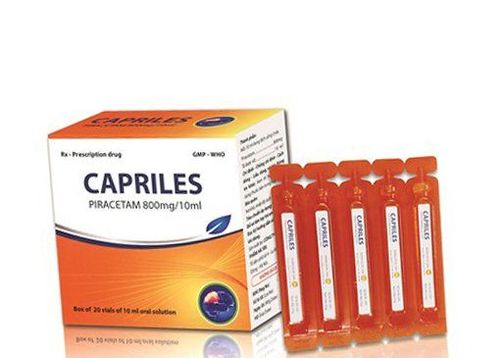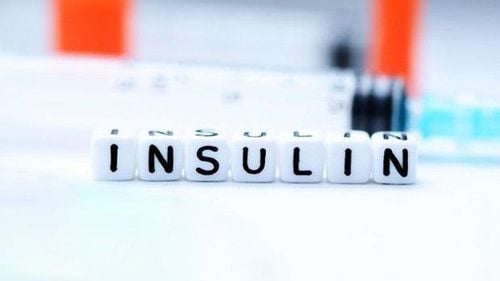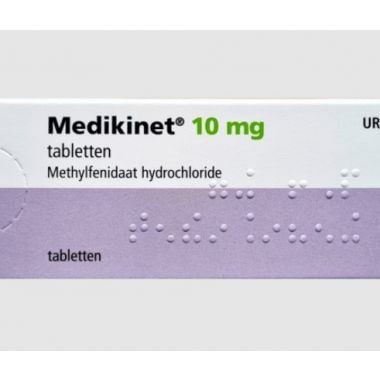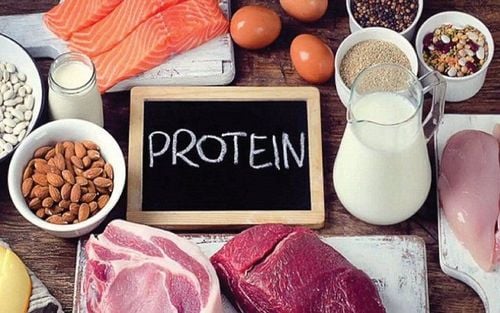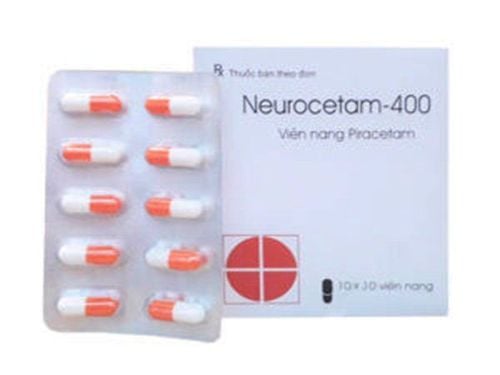This is an automatically translated article.
What are the healthiest foods and supplements for the ADHD brain? Studies show that a high-protein, low-sugar, additive-free ADHD diet combined with supplements like fish oil and zinc can help manage symptoms.1. What is ADHD?
ADHD it is usually first diagnosed in childhood and often persists into adulthood. Children with ADHD may have difficulty paying attention, controlling impulsive behaviors (being able to act without thinking about the outcome) or being overactive.2. Causes of ADHD
Scientists are studying the cause(s) and risk factors in an effort to find better ways to manage and reduce the risk of ADHD. The causes and risk factors for ADHD are still unknown, but current research suggests that genetics play an important role. Recent studies of twins link genes to ADHD.In addition to genetics, scientists are studying other possible causes and risk factors including:
Brain injury Environmental exposure (eg, lead) during pregnancy or at a young age Early pregnancy Low birth weight Research does not support the popular view that ADHD is caused by eating too much sugar, watching too much television, parenting, or social and environmental factors such as poverty or chaos. turmoil in the family. Of course, many things, including these, can make symptoms worse, especially in some people. But the evidence is not strong enough to conclude that they are the main cause of ADHD.
3. What is the best ADHD diet?
Health, food, and nutrition can make a significant difference in the lives of both children and adults who have been diagnosed with ADHD.Using nutritional interventions for hundreds of ADHD patients. In many cases, dietary changes not only help improve symptoms of hyperactivity, poor concentration, and impulsivity, but they also help calm them.
Many adults and parents of children with ADHD are eager to try foods and supplements as part of an ADHD diet to help manage symptoms, but they often don't know where to start. Below, learn how to find foods that are healthy for both children and adults, foods to add to your family's daily meals, and things to eliminate to provide significant symptom relief.

Dinh dưỡng là điều bạn cần quan tâm khi chăm sóc trẻ tăng động
4. ADHD Diet Rule 1: Stop Hyperglycemia
Protein-rich foods lean beef, pork, poultry, fish, eggs, beans, nuts, soybeans, and low-fat dairy products can have a beneficial effect on ADD symptoms.Protein-rich foods are used by the brain to make neurotransmitters, chemicals secreted by brain cells to communicate with each other. Protein can prevent a rise in blood sugar, which increases hyperactivity. Eating protein for breakfast helps the body produce neurotransmitters that wake the brain.
Combining protein with complex carbs that are high in fiber and low in sugar will help you or your child better manage ADHD symptoms throughout the day, whether you're taking ADD medication or not.
What many people don't know is that eating simple processed carbohydrates, like white bread or waffles, is almost like eating sugar. Your body digests these processed carbs into glucose (sugar) so quickly that it's almost as efficient as eating sugar from a spoon.
Breakfast consists of a cake and a glass of juice, or a waffle with syrup will cause blood sugar to rise quickly. The body responds by producing insulin and other hormones that cause sugar levels to drop too low, causing the release of stress hormones. Result? By mid-morning, you and your child have low blood sugar, irritability, and stress. This can worsen ADHD symptoms or cause some children without ADHD to act as if they have the condition. Eating a simple, low-protein lunch will cause similar symptoms in the afternoon.
Instead, try breakfasts and lunches rich in protein, complex carbs, and fiber like oatmeal and a glass of milk or peanut butter on a piece of wholemeal bread. The sugars from these carbohydrates are digested more slowly, because protein, fiber, and fat are eaten together resulting in a more gradual and sustained release of blood sugar. Result? A child can concentrate and behave better at school, and an adult can get through that long morning meeting.
5. ADHD Diet Rule 2: Choose Fish Oil
Omega-3s may improve several aspects of ADHD behavior: hyperactivity, impulsivity, and focus. Therefore, it is recommended that all children with ADHD take an omega-3 fatty acid supplement.Omega-3s are essential fats important for normal brain function. They are called “essential” fats because the body has to get them from the food we consume; Our bodies cannot make them. Research shows that children with ADHD have lower blood levels of omega-3s than children without ADHD. So, unless your child is a fish eater, you'll have to take a supplement, usually fish oil, to reach healthy levels.
Several studies on omega-3s and ADHD have shown positive effects. In one study 25% of children given a daily dose of omega-3 had a significant reduction in symptoms after three months; After six months, nearly 50% had better symptom control. This is an impressive result for a safe nutritional supplement with few side effects.
How much omega-3 should your child get and in what form? The two main omega-3 fatty acids found in the supplement are eicosapentaenoic acid (EPA) and docosahexaenoic acid (DHA). It seems that most of the benefits stem from omega-3 products that contain more EPA than DHA. I recommend a total dose of 700 to 1,000 mg a day for younger children and 1,500 to 2,000 mg for older children.
Some children improve within a few days, while others do not improve for several months. My advice to parents is to always be patient and not give up on your omega-3 diet too soon.

Omega 3 là chất dinh dưỡng cho trẻ tăng động bạn nên bổ sung
6. ADHD Diet Rule 3: Maintain Iron Levels
Many parents and professionals are not aware of the important role iron plays in managing ADHD symptoms.One study found that the average iron level of children with ADHD (as measured by ferritin) was 22, compared with 44 in children without ADHD. Another study found that increasing iron levels in children with ADHD improved their symptoms almost as much as taking stimulants.
The children in these studies were not anemic. Just because your child has a normal "blood count" does not mean that his or her ferritin levels are normal. Since too much iron is dangerous, I don't recommend giving your child iron without having their ferritin levels checked first. Ask your pediatrician to check.
7. ADHD Diet Rule 4: Check Zinc and Magnesium Levels
Zinc and magnesium are two other minerals that can play an important role in managing ADHD symptoms. Both are essential for normal health and a surprising number of children and adults, with and without ADHD, don't get enough of them. Zinc regulates the neurotransmitter dopamine and it may make methylphenidate more effective by improving the brain's response to dopamine.Magnesium is also used to make the neurotransmitter involved in attention and concentration, and it has a calming effect on the brain. Ask your doctor to check your or your child's magnesium and zinc levels as you check ferritin levels.
Although studies have been done on the effects of both minerals on ADHD, the results are not as clear-cut as in studies done on omega-3s and iron.
8. ADHD Diet Rule 5: Cut Chemicals
Some studies show that artificial additives make children without ADHD more hyperactive and make hyperactive children worse. Cheesecake and candy are good examples of foods that contain artificial colors and preservatives, but additives and colors can be found in other foods.The first step to avoiding additives is to read food ingredient labels until you find a variety of foods that do not contain additives. In most cases, raw, unprocessed foods are your best bet, as they contain few additives.
However, today you can find bread, cereal, cookies, pizza and anything else made without additives. Avoid colorful cereals, substitute 100 percent juice for soft drinks and fruit juices, most of which have artificial colors and flavors.

Khi chăm sóc trẻ tăng động, bạn nên cắt giảm các loại thực phẩm chứa phụ gia
9. ADHD Diet Rule 6: Watch for Food Sensitivities
Several studies have shown that many children with ADHD are sensitive to certain common foods in the diet. These sensitivities made their ADHD symptoms significantly worse. In a recent study, 50 children were put on a restrictive diet for 5 weeks, and 78% of them had a significant improvement in their ADHD symptoms!In fact, an improvement has been seen in many children when they stop eating foods to which they are sensitive. The most common culprits are dairy, wheat, and soy.
It's important to know that children with ADHD are not necessarily "food allergies" in the strict, medical sense. Food allergy test results are often negative in these children. The only way to know if food sensitivities are affecting your child is to eliminate certain foods from daily consumption and observe how the child reacts. A child may have food sensitivities if he or she has symptoms of an allergy, such as hay fever, asthma, or eczema. But I've seen kids without any of these problems respond well to changes in what they eat.
If there are one or two foods that you suspect may be worsening your child's ADHD symptoms, eliminate one for two or three weeks. Observe your child's ADHD symptoms during that time. If you're thinking of starting a limited plan, find a professional to guide you.
10. ADHD Diet Rule 7: Try Helpful Herbs
Several herbs have been recommended to manage ADHD symptoms, including ginkgo biloba and ginseng. Most are poorly researched, with two exceptions.In a study on hyperactivity and sleep problems, a combination of valerian and perilla helped relax children with ADHD by reducing anxiety. Use these herbs regularly for kids dealing with these problems. Consult a naturopathic doctor to find the right dosage for your child.
Herbal products vary greatly in quality, and some contain contaminants. You should find a knowledgeable professional to help you locate a reliable source of pure, standard herbs.
Please dial HOTLINE for more information or register for an appointment HERE. Download MyVinmec app to make appointments faster and to manage your bookings easily.




